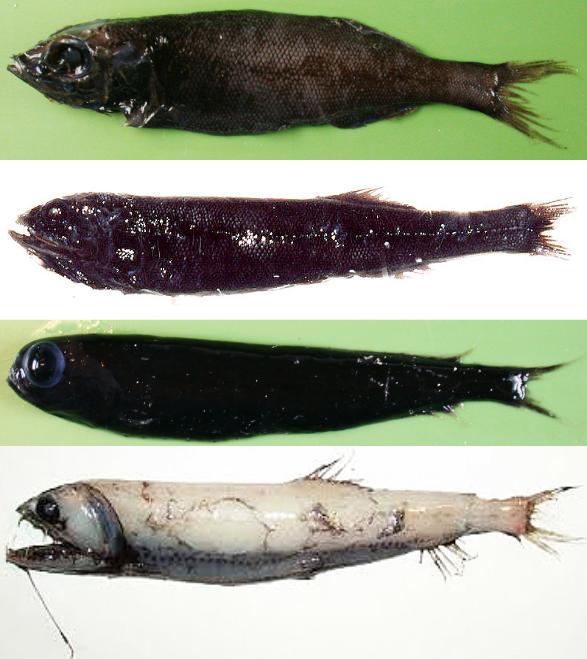
Mesopelagic fishes, inhabiting the water column in the depth range from 200 to 1000 m, play an important role in the ecosystems of the World Ocean, being an intermediate link in the food webs between the lower and higher trophic levels. However, information on their diversity, ecology and abundance in the published literature remains rather limited. Works devoted entirely to the description of otoliths of mesopelagic fish species (hard calcified formations located in pairs in the capsules of the membranous labyrinth of the fish skull and serving as organs of balance) are rare. Scattered and fragmentary data on individual species can be found in several otolith atlases. Various methods are used to study the taxonomy and phylogeny of fishes, but some of these approaches, for example, molecular genetics, are time-consuming and expensive, as well as the use of special technical means. In this regard, the study of otolith morphology represents a cheaper, less time-consuming and technically demanding alternative approach.

An international team of scientists from Russia, which included employees of the P.P. Shirshov Institute of Oceanology of the Russian Academy of Sciences (IO RAS), the A.N. Severtsov Institute of Ecology and Evolution of the Russian Academy of Sciences (IEE RAS), and the All-Russian Institute of Fisheries and Oceanography (VNIRO), as well as specialists from New Zealand and Belgium, analyzed the external morphology of a large series of otoliths of 16 species of mesopelagic bony fish (Fig. 1) from the Irminger Sea in the North Atlantic (Fig. 2), which made it possible to trace its ontogenetic and intraspecific variability. The results of the study showed that the morphology of the otoliths of juveniles and adults differs significantly, especially in smooth-headed Alepocephaliformes (Normichthys operosus, Sagamichthys schnakenbecki, Xenodermichthys copei) and the Antarctic borostomia Borostomias antarcticus (Fig. 3).

Such works find their application in studying the age, growth, migrations of fish and species identification of fish (especially with poorly developed taxonomy and at early stages of development), in paleoichthyological, trophological and population studies.
Publisher's note: Hoedemakers K., Jawad L.A., Artemenkov D.V., Benzik A.N., Orlov A.M. 2024. Otolith morphology of mesopelagic fishes collected from the Irminger Sea, North Atlantic Ocean // Zoologischer Anzeiger.
